User List form control
A form control that lets you select a user from a list.
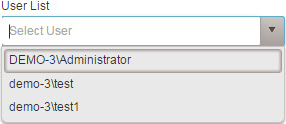
Configure an User List form control
To configure
an
User List  control,
do the procedure in this topic.
control,
do the procedure in this topic.
Video: Common Configuration Settings in eForm Controls
Examples
- (Example) Configure the User List Form Control
- Examples - Step-by-step use case examples, information about what types of examples are provided in the AgilePoint NX Product Documentation, and other resources where you can find more examples.
Good to Know
- The User List form control is associated with the People Picker data
field in Data Entities.
This feature requires AgilePoint NX OnDemand (public cloud), or AgilePoint NX Private Cloud or AgilePoint NX OnPremises v7.0 Software Update 1 or higher.
How to Start
- Open eForm Builder.
For information about how to open this screen, refer to eForm Builder screen.

- On the eForm Builder screen, in the Tool Box, open the Commmon Controls tab.
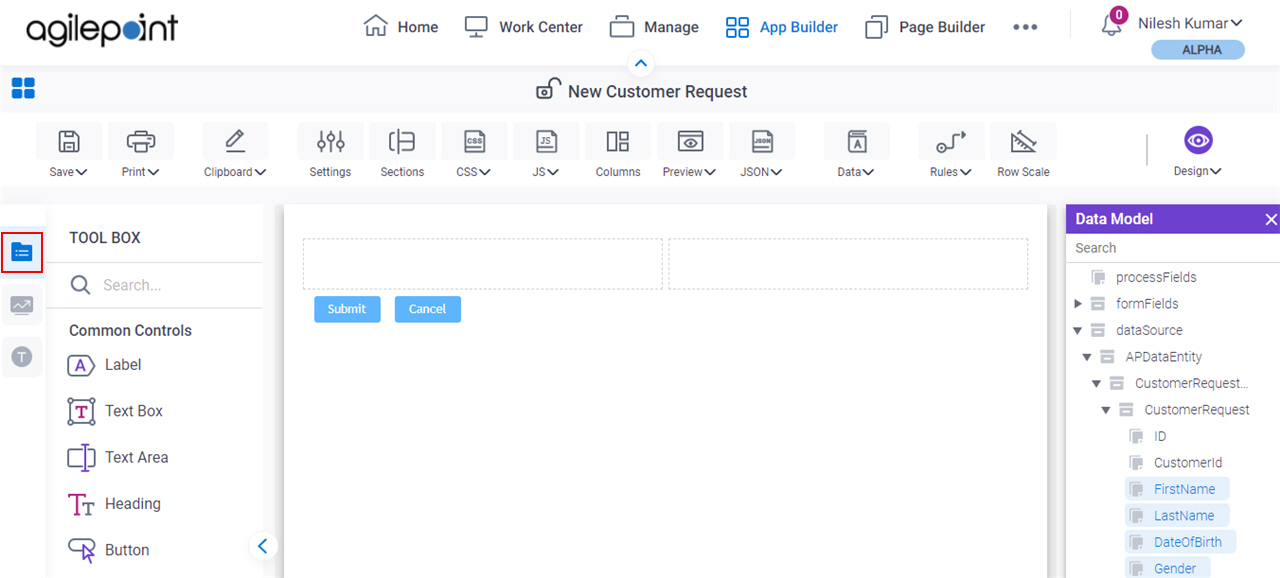
- On the
Common Controls tab, drag a User List
 form control onto your eForm.
form control onto your eForm.
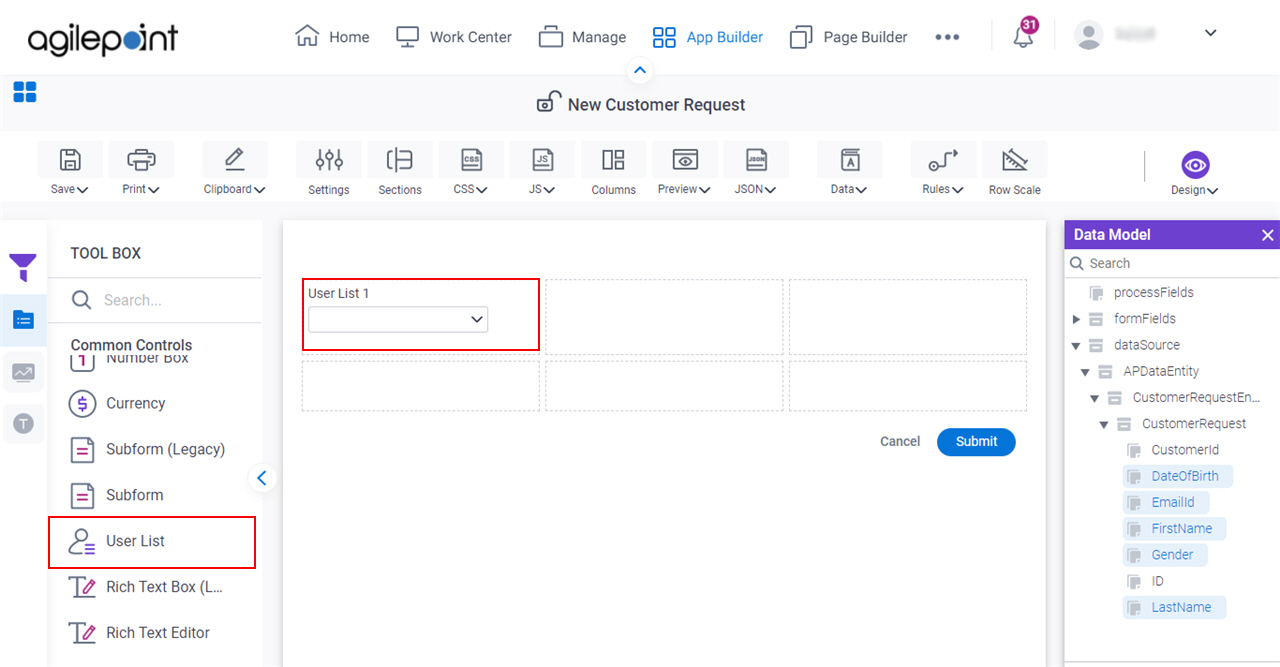
Procedure
- Complete the settings on the configuration screens.
You can use the Data screen screen to specify a variable.
General
Specifies the basic configuration for the User List form control.

Fields
| Field Name | Definition |
|---|---|
Label |
|
Internal Name |
|
Help Text |
|
Help Text Display |
|
Configure
Configures advanced settings for your form control.
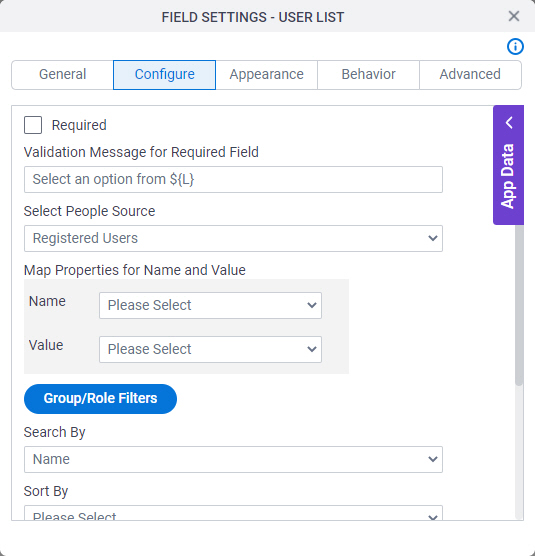
Fields
| Field Name | Definition |
|---|---|
Required |
|
Mandatory Field Validation Message |
|
Select People Source |
|
Map Properties for Name and Value - Name |
|
Map Properties for Name and Value - Value |
|
Group/Role Filters |
|
Search By |
|
Sort By |
|
|
Sort Order |
|
Enable Multiple User Selection | |
Include Disabled Users |
|
Maximum number of users to display by default |
|
Pick Group/Role Filters screen
Specifies the AgilePoint groups or roles that can show on the eForm.
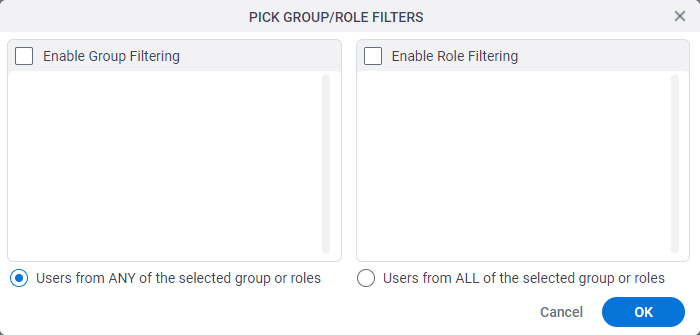
Fields
| Field Name | Definition |
|---|---|
Enable Group Filtering |
|
Enable Role Filtering |
|
Users From the Selected Group/Roles |
|
Appearance
Specifies the look and feel for your form control.

Fields
| Field Name | Definition |
|---|---|
Font Family |
|
Font Style |
|
Background Color |
|
Border Color |
|
Foreground Color |
|
Apply Font Properties To Control |
|
Label CSS Class |
|
Field CSS Class |
|
Container CSS Class |
|
Font Size (px) |
|
Behavior
Specifies how the control shows on your form.
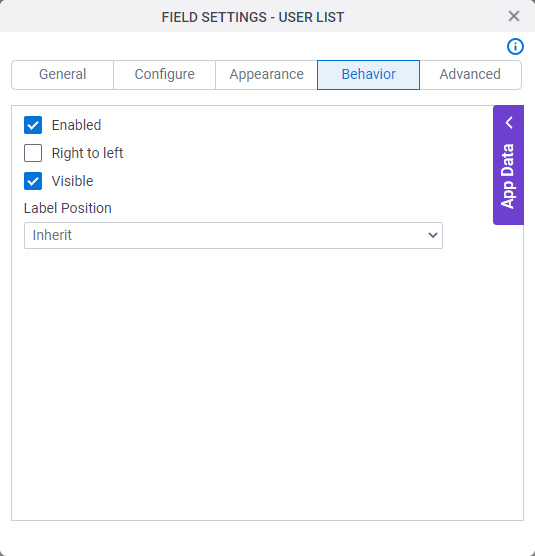
Fields
| Field Name | Definition |
|---|---|
Enabled |
|
Right To Left |
|
Visible |
|
Label Position |
|
Advanced
Specifies advanced settings for your form control.
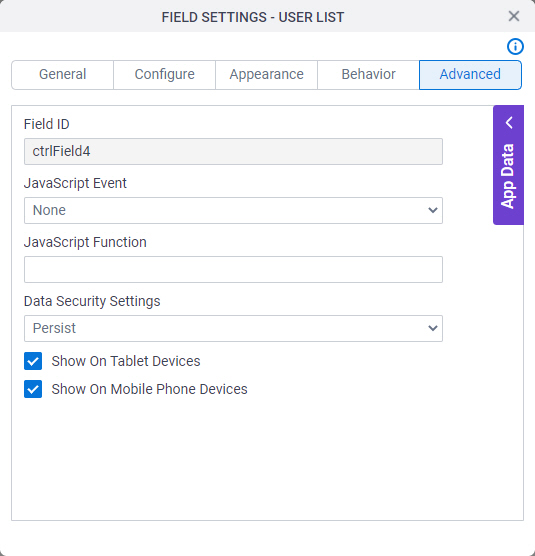
Fields
| Field Name | Definition |
|---|---|
Field ID |
|
JavaScript Event |
|
JavaScript Function |
|
Data Security Settings |
|
Show On Tablet Devices |
|
Show On Mobile Phone Devices |
|



